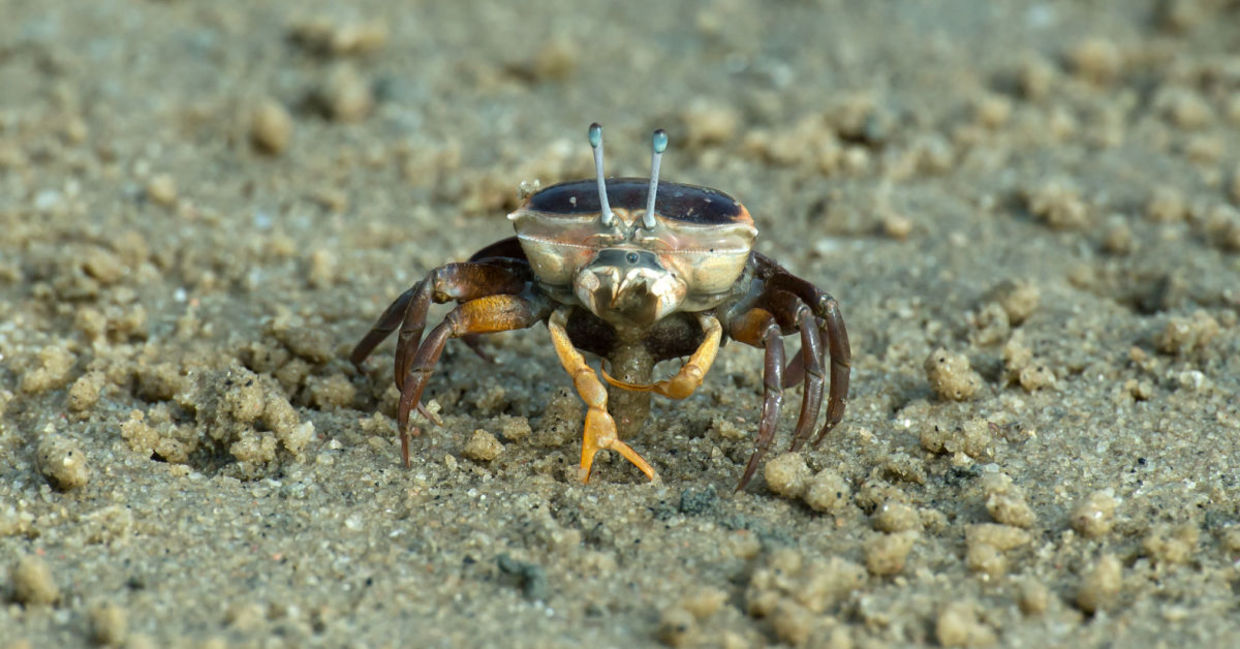
(Kim Pin / Shutterstock.com)
Imagine a camera that has a full field of vision. Think of all the amazing shots you can take. This type of camera will soon be available thanks to an unlikely creature; the fiddler crab.
In a recent study published in Nature, scientists from Massachusetts Institute of Technology’s Computer Science and Artificial Intelligence Laboratory, The Gwangju Institute of Science and Technology (GIST) and the Seoul National University in South Korea present a new type of artificial vision system, or camera, that can see on land and underwater, and in addition has a 360 degree field of vision. This is a huge innovation in a field that has become more and more important to our modern lives.
The limitations of a conventional camera
Over the past decade or so, camera technology has become more and integrated into our everyday lives. We use our phone camera to store memories and important information, and cameras help keep people safe while driving, and in certain cases, even help drive the car itself. Parallel parking is so much easier now that cars come with rearview cameras.
However, up until now, cameras have also been limited. Wide field of vision cameras have been around since 2013, but these cameras only have a 180 degree field of vision, and can be clunky, according to MIT News. They work by essentially merging images coming from two or more cameras. This can lead to distortions. In addition, using the cameras underwater also leads to distortion as light refracts differently underwater.
Inspiration from nature
According to Fast Company, the researchers turned to nature for inspiration. They began by studying the fiddler crab and its compound eye. Unlike humans, fiddler crabs can look in many directions at the same time, giving them a full 360 degree field of vision. In addition, fiddler crabs need to be able to see well on both land and in water.
Dr Fredo Durand, a professor of electrical engineering and computer science at MIT’s Computer Science and Artificial Intelligence Laboratory, told Laser Focus World: “Amphibian creatures are particularly exciting because they need to operate in two environments with vastly different optical characteristics. It’s humbling to learn from nature how to address these challenges.”
The result, reported MIT News,is a little black round ball of a camera that interprets and understands light in various ways. The scientists tested the camera’s capabilities by projecting an array of “cutesy” images onto the camera at different angles. They also immersed the camera halfway into a tub of water to test its underwater capabilities. It passed with flying colors.
Though the camera is still in the early stages of its development and is not ready for commercial use, the hope is that it will eventually be used to help make cars safer by improving camera quality in general, but also improve camera capabilities in the rain.
So the next time you can parallel park in the rain with ease, think of the fiddler crab and all the good it has done.
YOU MIGHT ALSO LIKE:
Smartphones Can Detect the Condition of Bridges
These Devices May Help People See The ‘Invisible’
New Robotic Falcon Scares Birds Out of the Way of Planes







